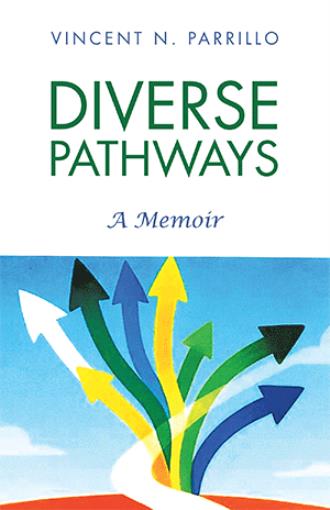At the State Parliament building in Dresden, I met in 1993 with the Vice President of the Parliament, also the State Commissioner. An excellent discussion took place regarding refugees and asylum-seekers in Saxony, with Raimonde acting as interpreter.
We later drove to the city outskirts, on a small mountain overlooking the Elbe River and the city, to the former summer residence of the King of Saxony. We walked through the beautiful formal gardens into a cemetery. Many tombstone engravings named the people as “lost” on the 1945 dates of the highly controversial city bombings, suggesting to me no remains were at that site. Saddened, I left with Raimonde to have a light supper and to attend a screening of my Ellis Island video at a teachers conference.
Afterwards, Raimonde, three other Embassy staff members, and I went into the center of Dresden. I was struck by the rubble of Our Lady's Church, left there for nearly five decades by the communists as a propaganda memorial. The Russians had a sign outside the surrounding cyclone fence saying, “This beautiful church was destroyed by the United States of America for no reason at all.” The building stones were numbered and stored on shelves, for the upcoming rebuilding of the three-story edifice, with replacement stones deliberately in a different color.
Next, we walked along a promenade above the Elbe River (“the balcony of Europe”), and then on to a pedestrian street and into a seventeenth-century beer garden to have the local beer and a delicious dessert with a potato base and cinnamon applesauce.
The following morning, I gave a presentation to forty teachers attending an American Studies conference, and seated behind tables arranged together in a u-shaped formation. The talk seemed to go well, as affirmed by their fists rapping on their tables in appreciation.
Afterwards, three of them spoke to me and told me I was “so typically American”) with my informal, speaking style and use of humor. When I asked how they thought I was typical, since I had been informed that they had never before met an American, the answer was “We’ve heard about you Americans.” I thought then (and now several decades later) how fortunate that I met their stereotypical expectations, as all of us know Americans who are not easy-going, warm, and friendly (a few of their other stated assumptions).
Later, Raimonde and I went to a model asylum house. Here we met Ali, a Pakistani who ran this place for about fifty people. Unlike others that are privately run and exploit the auslanders (foreigners), this was an experimental nonprofit asylum house, dependent on donations. It gave daily food cartons to their temporary guests, who shared a community kitchen and small game room.
In recent years neo-Nazis had attacked other asylum houses, so to defuse the situation, Ali had invited the local right-wing radicals into his facility, despite police warnings. He wanted to show the meager (not the rumored luxury) conditions, and humanize the asylum seekers, (children gave them hand-drawn cards, and adults told of harrowing experience), in an effort to correct their false impressions. His plan worked, as his place was never attacked.
A university undergraduate volunteer drove us into the city center to the Auslander Dresden, the parent organization of thirty-eight entities. We met with five people—three counselors and two in public relations—and discussed their challenges. Ten months earlier, they had assumed possession of the house in which we were, and they planned to make it into a “House of Nations” meeting place. They told me that they had to strive not to get demoralized, given all the obstacles they encountered. They also asked me to invite the young political leaders I would meet that evening to attend the upcoming memorial program for a Mozambique youth thrown off a train and killed by neo-Nazis two years earlier.
As our visit concluded, Raimonde took me to see some Dresden sites in the daylight. It is a strikingly beautiful city with its architecture, restored old buildings, and ensconced statues. The Zwinger is a palatial complex with large gardens comprising the size of a large city block. Words cannot adequately describe my reactions to seeing the magnificent splendor of the palaces at each corner, and large center with its lawns, flower gardens, and fountains. From the elevated terrace, we could see the cityscape, both the lovely old architecture in one area and socialist buildings with their drab, functionalist styles of gray concrete in another.
Leaving Zwinger and walking past a few other sites, notably the historic opera house built in1841, we no longer had time for dinner at a restaurant as originally planned. Instead, we walked to a McDonald's(!) My disheartening thought was, “With so many lovely and inviting places to choose, we are going here!” Well, I had a quarter-pounder and, being in Germany, was able to have a beer to wash it down.
The locale for meeting with about two dozen leaders of political youth groups was another surprising choice: a large table in a pub. A small newspaper article had attracted three older people to this gathering as well. When we entered, I saw what I thought were neo-Nazis with their shaved heads except for a small tuft of hair on top. I was a little nervous they too might have seen the article and were there to cause trouble. No problem ensued though.
I gave an informal 25-minute presentation, where I discussed the complexities of the U.S. multicultural experience, while stressing that being a nation of immigrants is precisely where America’s strength lies. An extensive dialogue followed, the session running more than twice its scheduled length, well past ten o’clock. It easily could have gone on far longer far into the night because the people asked me to stay. However, Raimonde had a train to catch, and he apologetically closed out the meeting.
Next day, I flew to Pisa for my four-day conference, and then on to Stockholm for the second leg of my first USIA assignment.



